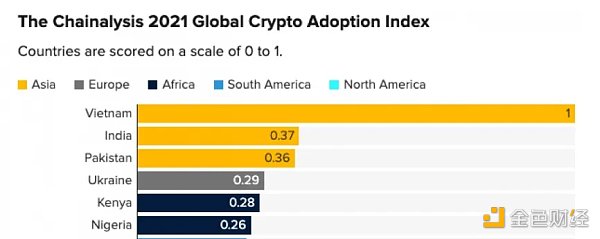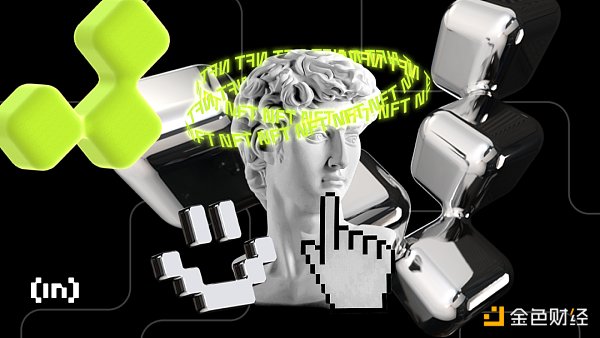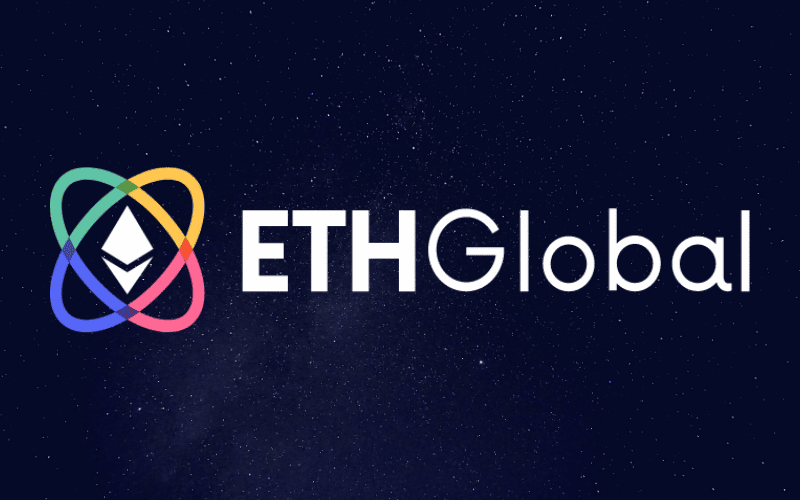Blockchain reshapes digital identities, which applications are worth looking forward to?
The blockchain is undoubtedly one of the hottest technologies, and it is considered to be an important driving force for the fourth industrial revolution and an important cornerstone for building value Internet. At present, as a new generation of information and communication technology, the blockchain is accelerating integration with traditional industries , and technologies and applications such as blockchain+medical, blockchain+finance, blockchain+logistics, blockchain+AI are emerging one after another. It can be said that with the continuous enrichment of blockchain application scenarios, the blockchain will play an increasingly important role in our production and life, and more industries and enterprises will face the opportunities and challenges brought by the blockchain.
The report of the 19th National Congress of the Communist Party of China proposes to build a digital China. The purpose is to give full play to the leading role of informatization in economic and social development. Digitalization is the key technical support for informationization. Deloitte's 2019 Technology Trends Report points out that technologies such as digital and cloud are maturing, but still have potential to be tapped; at the same time, the importance and impact of technologies such as blockchain, cognition and digital reality are growing rapidly. It can be seen that digital transformation is a necessary process for organizational innovation in the future, and people's work and life are being widely reconstructed.
Whether it is the Internet age or the blockchain era, one of their characteristics is "digital." The basis of digital activities is the digital identity of users. Only by ensuring the true and effective digital identity of the user, the information data of a series of activities, transactions, etc. associated with it is real and effective. Therefore, the development of digital identity system is inevitable, and blockchain technology provides a relatively credible solution to a certain extent by virtue of its decentralization, multi-party consensus, difficulty in tampering, transparency and traceability.
What is digital identity?
Digital identity refers to the identifiable depiction of individuals through digitized information. It is also understood as the condensing of real identity information into public/private keys in the form of digital codes to bind, query and verify individual real-time behavioral information. Digital identity includes not only identity information such as birth information, individual descriptions, biometrics, but also individual behavioral information of various attributes. For example, WeChat, Facebook stores social information, Alipay, Amazon stores transaction information, games, video software stores entertainment information, etc. These different attributes are part of the personal digital identity. In the Internet age, due to the large number of media for information acquisition and storage, people's digital identity information is relatively scattered. Only the more comprehensive the attributes, the more complete the identity information. By continuously integrating new digital identity information, the user can achieve a more comprehensive portrayal. .
- Babbitt column | After the “no mining”, has the trend of the development of the blockchain industry changed?
- Internet and blockchain revolution: Are we in 1994? What should I do next?
- Domestically, should the blockchain industry standard be released? Li Ming: Misunderstanding, in fact, will publish the international standard for blockchain terminology
With the rapid development of the Internet and digital, the importance of digital identity has also risen sharply. As one of the relatively mature applications in China, identity authentication mainly binds personal behaviors with the identity card information of public security agencies, and fills in mobile phone, photo, social, shopping, sports and other information to achieve third-party verification and verification of relevant documents. .
The development of identity authentication can be roughly divided into three stages: traditional identity authentication uses identity documents, which are characterized by offline identity authentication, which belongs to identity authentication 1.0; the emergence of eID and CTID, using centralized digital authentication technology, characterized by online single Point identity authentication belongs to identity authentication 2.0; blockchain digital identity adopts blockchain authentication technology, which is characterized by online joint identity authentication, which is a network platform that can carry identity authentication services in the future digital age, and belongs to identity authentication 3.0.
Three advantages and three major pain points
The emergence of digital identity is profoundly changing the development momentum and development mode of the economy and society. Compared with the traditional identity system, it will greatly improve the overall social efficiency and maximize the release of user value, so that the government, service providers, users and other parties Can benefit from it.
Users have the flexibility to use personal information. Users not only have control over other people's access to personal data information, but also can decide when and where and how to publish their information. In addition, the digitization of personally identifiable information helps users to conduct transactions with the outside world more conveniently, while protecting users from illegal activities.
The service provider implements a customized service. On the one hand, the service provider can customize the corresponding products and services for the user attributes and purposes by means of the user identity information recorded in the system. On the other hand, the existence of digital identity system can effectively replace the complicated paper proof from the previous process, reduce the cost of repeated communication between the service provider and the user, and greatly improve the efficiency of work.
The government communicates with citizens more efficiently. The digital identity records the key identity data and behavioral information of all citizens. The government can help the citizens with different attributes and their needs. At the same time, from the perspective of the regulatory authorities, with the help of the digital identity system, the regulatory authorities can strengthen supervision and enhance the pertinence and effectiveness of supervision.
At present, there are many problems in the process of digital transformation in China, such as insufficient development and utilization of digital resources, imperfect digital infrastructure, and challenges in digital social governance. This has triggered a series of pain points in the current development stage of the digital identity field, and it is urgent to effectively solve them. .
The true validity of personal data is missing. Even if the network identity is basically real-named, the user only gets the identity authentication, and does not really grasp the identity control right, and then there are many problems. For example, it is impossible to determine whether the user who is using the digital identity is himself or herself, and it is difficult to trace the true validity of the digital identity information in the system from the source, and it is more difficult to correspond the reality to the network identity.
The construction of social infrastructure is incomplete. There are many classifications of identity attributes, and different application scenarios require different identity information. For example, the personal information recorded in the government identity system and the business identity system is not uniform, and the same person is in different centralized systems. Information is isolated, and mutual authentication between systems requires a very complicated process, making it difficult to perform consistent collaborative management.
Simple authentication technology makes privacy easy to leak. As people become more and more active on the Internet, the prerequisite for using Internet services is to solve the problem of identity identification. At present, the identity authentication methods of major platforms are relatively simple, and there is a hidden risk of personal privacy information disclosure, which may lead to the sale of user information, resulting in serious loss of property and related interests.
Blockchain empowers digital identity
Behind the blockchain-based digital identity, it mainly covers four important dimensions: identity autonomy, data security, personal privacy, and asset. The asymmetric encryption and distributed storage of blockchain can effectively protect the privacy and data security of users, and leave the decision-making power of user information in the hands of users, becoming a kind of digital assets. The specific value can be reflected in the following three aspects:
Data is valid
Authorize a credit endorsement (such as government certification) before the data is chained, and then put the data on the chain. Based on the non-tamperable nature of the blockchain, the integrity and security of the identity data on the network is guaranteed, and the risk of identity disclosure, theft, tampering and fraud is prevented, so that the data can be guaranteed from the source. In addition, every piece of data in the chain is truly and completely recorded in each node under the “supervision” of others, and the evidence is sufficient and traceable. The system is open to all users, and all participants require authorization from the parties to obtain information about other individuals.
Privacy protection
The identity information belongs to sensitive data. In the application process, the data should be distinguished. The public data with lower privacy level can be kept on the network. The most important private data can be saved on the user equipment to form “chain + chain. "Full + Privacy" full mode. The asymmetric encryption mechanism of the blockchain effectively protects the privacy of users. On the one hand, the blockchain can protect the privacy of users from being used by anyone else. The right to use is in the hands of the users themselves, not in the hands of the platform. On the other hand, the privacy of both parties can be well encrypted during the transaction. Dealing with the outsiders' understanding of their trading behavior is limited to the process level, and the information of both parties is not open and transparent.
Data sharing and user rights
At present, each Internet platform is independent of each other, and each has its own core data. Using blockchain technology to build a coalition chain system between major platforms, relying on corresponding smart contracts, consensus mechanisms and incentive systems can effectively drive enterprises to share data and promote industry information circulation and integration. At the same time, the user has the right to select, authorize, delete and restore the identity data. In different application scenarios, the corresponding data can be authorized, and the user has absolute autonomy over his identity data.
Where does “blockchain+digital identity” fall?
Digital identity can be regarded as the cornerstone of digitalization in various fields, whether it is government governance, public services, or medical, telecommunications, finance, etc., which are closely related. As the “data sovereignty” consciousness is fully awakened, the blockchain digital identity is accelerating the “scenario” layout. Throughout the world, many participants, including governments, banks, Internet giants, and startups, have made various attempts in the field of digital identity, and some typical areas have had initial results.
Public Service
Because of the theft or loss of identity, more than 7,000 homeless people in Austin, Texas, have no access to social services such as medical care, housing and potential employment. To address these issues, the city uses blockchain technology to create unique digital identifiers for homeless people, enabling them to rebuild credible records about housing, health and employment records and help them get back on track. IDHub, a domestic blockchain digital identity startup, has realized the link between the blockchain and the pan-Internet, government, judicial, notarization and other multi-business scenarios through the core entry of the blockchain digital identity. In 2017, Foshan Chancheng in Guangdong and IDHub cooperated to establish the IMI digital identity system, kicking off the “Zhixin Chancheng” program, providing a credible identity data authentication interface for the local government and the jurisdiction of more than 1.3 million residents to achieve administrative approval and medical health. Mobile phone online application for public services such as charity, pension, and disability; as of the first quarter of 2019, the project will complete more than 250 public affairs matters.
Telecommunications service
At present, major operators around the world have joined the major leagues to develop blockchain research. The four major US carriers AT&T, Verizon, T-Mobile and Sprint form a mobile authentication verification team. In March 2018, a new "mobile verification platform" was released, which can provide encrypted authentication calls to other users with the user's consent. Number and profile data, and recorded using blockchain technology to ensure true traceability. In September 2018, China Mobile launched the “Liannuo Cloud ID Card Verification Platform” to provide user identity authentication services for the express delivery industry and the lodging industry. Under the blessing of blockchain technology, it prevented possible information tampering and ensured information. Traceable, and the idle ID verification capability of each host node can be shared, ensuring verification efficiency.
Financial market
According to a study released by Forrester GBG, 95% of Australian financial companies are focusing on digital identity, and 92% are using digital identity as a key task for platform operations. In 2017, Canadian startup SecretKey announced a joint release of a blockchain-based digital identity network with IBM and cooperation with Bank of Montreal, Bank of Canada Imperial Bank, Royal Bank of Canada, Scotiabank, Toronto Dominion Bank, etc. The provided mobile app authenticates the identity and controls which part of the trusted credentials stored in its blockchain can be shared with the selected company, and these companies can also quickly verify the identity of the user to schedule a new service. In 2018, the American Credit Union and the blockchain digital identity startup Evernym jointly released a blockchain digital identification system called MyCUID, which will enable credit unions around the world to communicate with financial institutions. 2 billion people provide banking services.
The challenge of "blockchain + digital identity"
Blockchain technology as an emerging technology, although the government is also implementing, the industry is also exploring, but in fact, there are still many areas for improvement in blockchain technology. From the current characteristics of blockchain technology and digital identity, there are still some obstacles and restrictions in the combination of the two :
The authenticity of the uplink data is difficult to guarantee. Blockchain technology can guarantee the true validity of the data on the chain, but the authenticity of the data under the chain and the process of passing it to the chain may be risky. Offline data requires an authority to certify. Based on the result of the authentication, the information is then chained to ensure the accuracy of the initial information.
There are restrictions on the management of identity systems in various countries. The blockchain network is a global network. Due to the obvious boundaries between countries, the globalization of digital identity systems will be limited. In the country, the government authenticates user identity information and can access and supervise user data information. However, whether or not the systems are connected to each other and whether the information can complement each other is highly questionable.
The relevant laws and regulations are not perfect. Digital identity systems based on blockchain technology definitely need to be organized by organizations with blockchain technology background. Whether the legal definition of legal status and responsibility of digital identity system builders is clear enough, and difficult disputes arise in the process of system operation. How to distinguish the relevant legal responsibilities, these issues should be fully considered in the initial stage of the platform construction.
Based on the full understanding of the digital identity system, combined with the characteristics of blockchain technology – decentralization, peer-to-peer network, time stamp, non-tamperable, consensus mechanism, smart contracts, etc., can be found, digital identity and blockchain technology There is a clever connection between them. In the blockchain era, the two are indispensable, synergistic and mutually reinforcing. From the current point of view, the development of digital identity systems is inevitable, and blockchain technology also provides a relatively credible solution to some extent .
The source of digital identity requires a strong endorsement, the strong centralization of the state to endorse. At this level, centralized organization is necessary, but the digital identity attribute information of circulation can fully utilize the decentralization of blockchain technology when confirming or verifying. At the same time, whether the user attribute information is sufficient and perfect depends on the cooperation of the enterprise, and the enterprise provides the strongest driving force in this process. Therefore, for the application of blockchain in the field of digital identity, the government is the cornerstone, the enterprise is the driving force, and centralization and decentralization also need to be treated dialectically.
Author | China Institute of Information and Communication Zhang Yihui Wei Kai
Source | China Post and Telecommunication 2019/04/11 7th Edition
We will continue to update Blocking; if you have any questions or suggestions, please contact us!
Was this article helpful?
93 out of 132 found this helpful
Related articles
- About Cosmos, Ethereum and Polkadot, all you want to know is this (2)
- Getting started with blockchain | In addition to Cosmos, there are also Polkadot
- Why does regulation strongly promote “blockchain poverty alleviation”?
- Opinion: It’s time to add fire to the blockchain.
- Why did he spend 38,888 yuan to buy a blockchain ticket?
- How does the enterprise blockchain + identity design design an identity model for the licensing chain?
- Vitalik: Radical Market, ZK, Privacy and more






